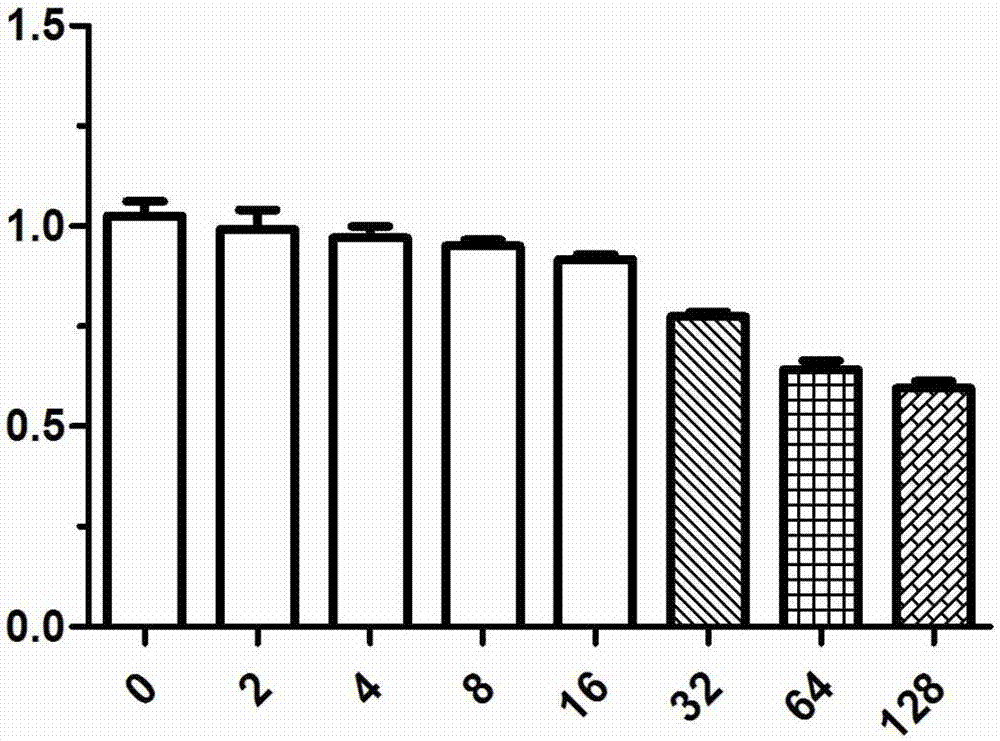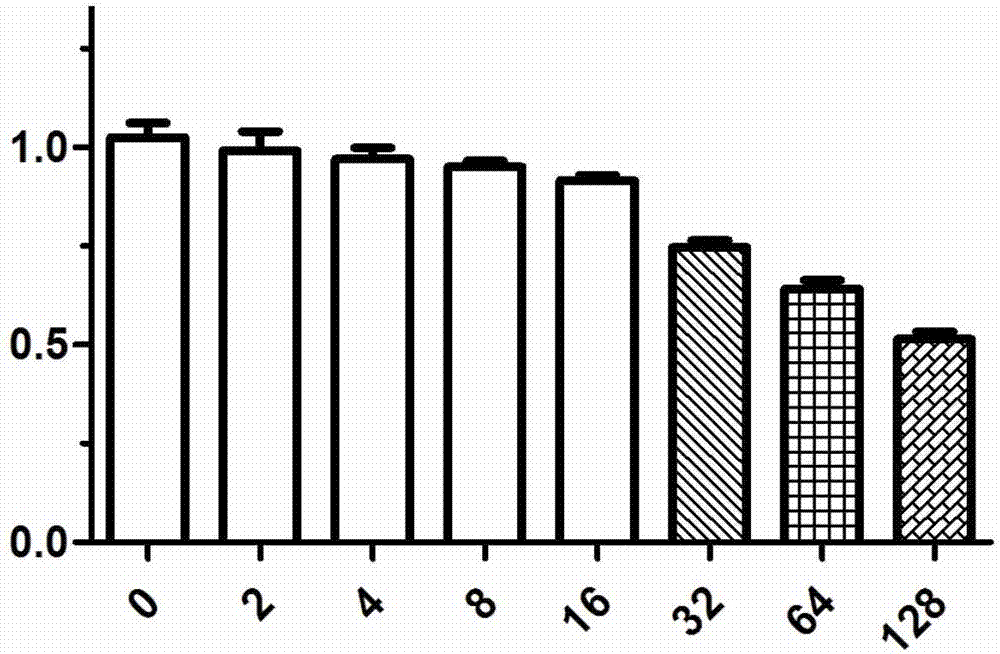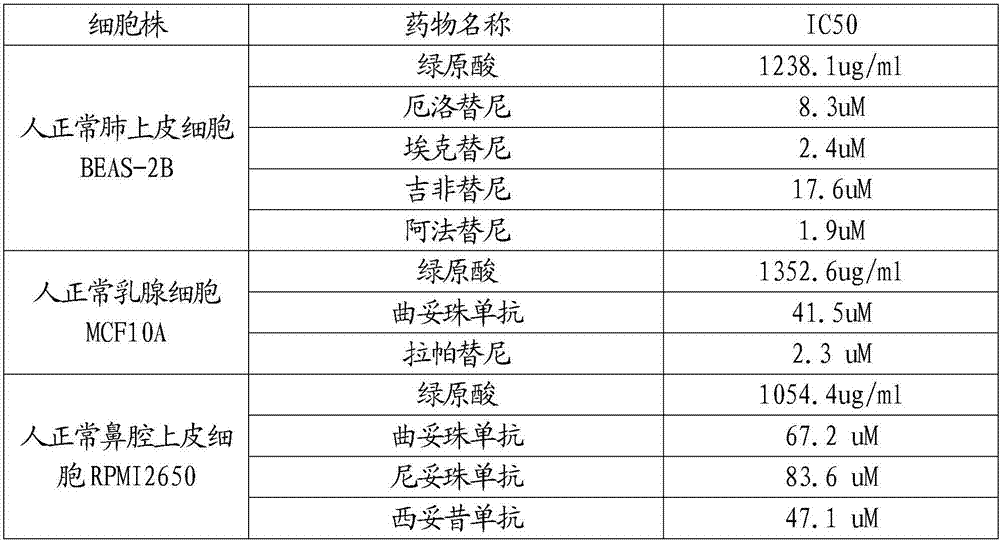Antineoplastic combined drug, and applications thereof in preparation of anticancer drugs
An anti-cancer drug and anti-tumor technology, applied in the field of biomedicine, can solve the problems of poor selectivity, drug resistance, toxic and side effects, etc.
- Summary
- Abstract
- Description
- Claims
- Application Information
AI Technical Summary
Problems solved by technology
Method used
Image
Examples
Embodiment 1
[0036] Example 1 Effects of Medication Alone and Combined Medication on Different Normal Cell Lines
[0037] 1.1 Materials and Instruments
[0038] Test drugs: chlorogenic acid, erlotinib, gefitinib, icotinib, afatinib, trastuzumab, lapatinib, nimotuzumab, cetuximab .
[0039] Tested cell lines: human lung cancer cell line A549, human breast cancer cell line MDA-MB-453, human nasopharyngeal carcinoma cell line CNE-1, human normal lung epithelial cell BEAS-2B, human normal breast cell MCF10A, human normal nasal cavity Epithelial cells RPMI2650.
[0040] 1.2 Experimental method
[0041] Take a bottle of cells in the logarithmic growth phase, wash them twice with PBS, digest with 0.25% trypsin, and prepare a single cell suspension with RPMI-1640 culture medium containing 10% calf serum for counting. Inoculate in a 96-well culture plate under sterile conditions, and the number of inoculated cells is 5×l0 3 / hole. cells at 37°C, 5% CO 2 After incubation for 24 h in the incub...
Embodiment 2
[0066] Example 2 Chlorogenic acid reverses the drug resistance of human lung adenocarcinoma cell PC9 to gefitinib in vitro
[0067] 2.1 Materials and Instruments
[0068] Test drug: chlorogenic acid; gefitinib
[0069] Tested cell lines: PC9 cells, PC9 / ZD is a self-screening gefitinib-resistant cell line
[0070] 2.2 Experimental method
[0071] 2.2.1 Cultivation of drug-resistant cell lines
[0072] Human lung adenocarcinoma cell line PC9 cells were exposed to gefitinib (200nmol / L) for up to 3 months, and the gefitinib-resistant cell clones were selected to become PC9 / ZD cell lines. These two kinds of cells respectively have the ability of stable drug resistance to gefitinib. PC9 cells and PC9 / ZD cells were grown on the wall at 25cm 2 Culture flasks were cultured in DMEM medium containing 10% fetal bovine serum in 5% CO 2 , and incubated in a 37°C incubator. Observe the cells every day. When the cells grow to cover 70%-80% of the bottom of the bottle, they are subcultu...
Embodiment 3
[0089] Example 3 Synergistic and attenuating effects of chlorogenic acid and EGFR-targeted drug combination on tumor inhibition in vivo
[0090] 3.1 Materials and Instruments
[0091] Test drug: chlorogenic acid; afatinib, erlotinib, panitumumab, nimotuzumab
[0092] Tested cell lines: G422 cells, Lewis mouse lung cancer cell lines
[0093] Test animals: BABLc mice, C57BL / 6 mice
[0094] 3.2 Experimental method
[0095] 3.2.1 Establishment of experimental animal tumor models
[0096] Collect the cells in the logarithmic growth phase, centrifuge at 1000rpm for 5min, wash the cell sediment twice with PBS, and adjust the cell concentration to 1x10 with serum-free medium after counting 7 / m1, sent to the animal room under sterile conditions. Under sterile experimental conditions, mice were subcutaneously injected with 1x10 7 / m1 cells, 0.1ml per mouse, obvious skin mounds appeared in the injection area, and large rice grain nodules appeared in the left armpit of the nude mic...
PUM
 Login to View More
Login to View More Abstract
Description
Claims
Application Information
 Login to View More
Login to View More - R&D
- Intellectual Property
- Life Sciences
- Materials
- Tech Scout
- Unparalleled Data Quality
- Higher Quality Content
- 60% Fewer Hallucinations
Browse by: Latest US Patents, China's latest patents, Technical Efficacy Thesaurus, Application Domain, Technology Topic, Popular Technical Reports.
© 2025 PatSnap. All rights reserved.Legal|Privacy policy|Modern Slavery Act Transparency Statement|Sitemap|About US| Contact US: help@patsnap.com



